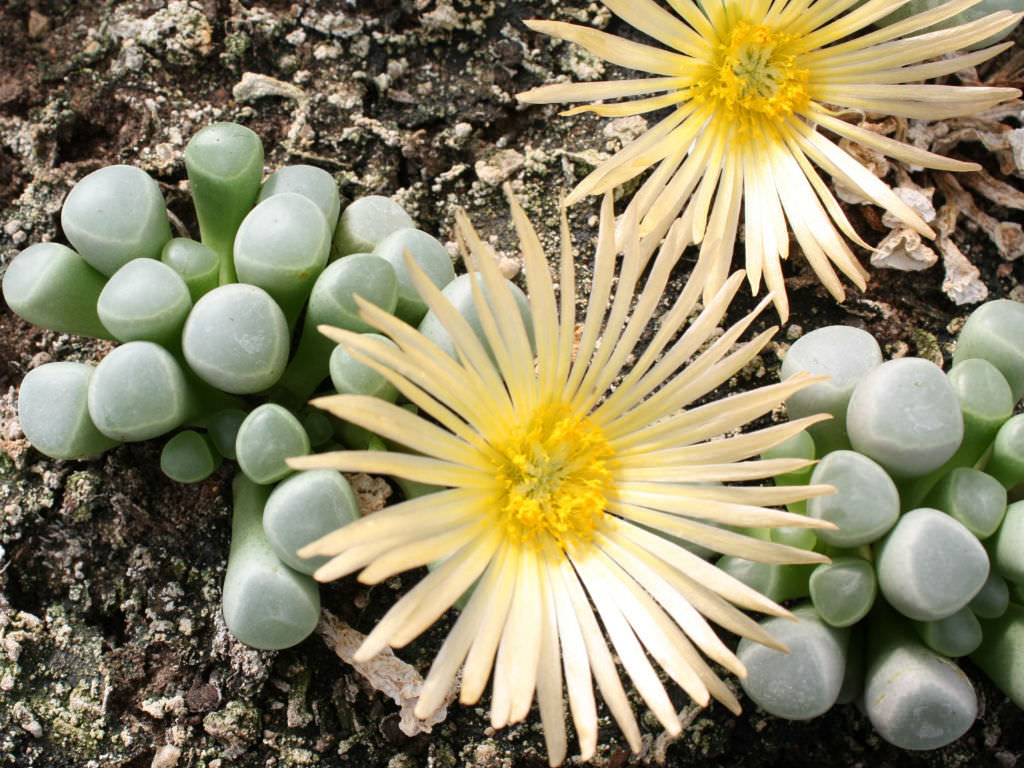Fenestraria Aurantiaca (Baby toes) - 20 seeds




Fenestraria Aurantiaca (Baby toes) - 20 seeds
he genus Fenestraria (Baby Toes or Window Plant) is found in the winter rainfall region of southeastern Namibia and South Africa. The dwarf plants form mats or small clumps in sandy soil. The leaves are flat-topped and windowed, with generally only the uppermost portion exposed in the wild. They possess thick, fleshy roots.
The currently recognized species in this genus is F. rhopalophylla. Each leaf has a leaf window, a transparent window-like area, at its rounded tip, it is for these window-like structures that the genus is named (Latin: fenestra).
Because of their modest size, Fenestrarias are best grown in a pot, either by themselves or in a mixed succulent bowl.Vensterplant
They are relatively easy to grow.
Soil: They prefer sandy, mineral-rich soil and require a very good drainage and protection from excessive water.
Fertilizer: Be careful not to apply too much fertilizer.
Watering: They require little water otherwise its epidermis breaks (resulting in unsightly scars). They need light sporadic watering during their winter growing period and require only very light sprinkling in summer as they are extremely rot prone if kept too moist when the heat turns off their growth cycle. Water regularly in spring and autumn, soak the compost fully but allow it to dry out perfectly between waterings. Nearly all problems occur as a result of overwatering and poor ventilation especially when weather conditions are dull and cool or very humid.
Exposure: They do well in full blazing sun, but keep cool and shaded in summer.
Hardiness: Hardy to -4°C.water to prevent shrivelling during their dormant period.
The basics of Mesemb care are very simple, with free-draining soil, plenty of sun and ventilation, and regular light watering in the right season. Yet the difficulties are endless, trying to adapt to the Mesembs’ own adaptability and to follow their growth habits in your particular conditions.
